Who’s going to shape the future of the health care supply chain? The smart, energetic and creative people who work for you and with you. The following supply chain leaders have exhibited hard work and dedication leading innovative strategies and ensuring their frontline workers have the supplies they needed amid a pandemic.
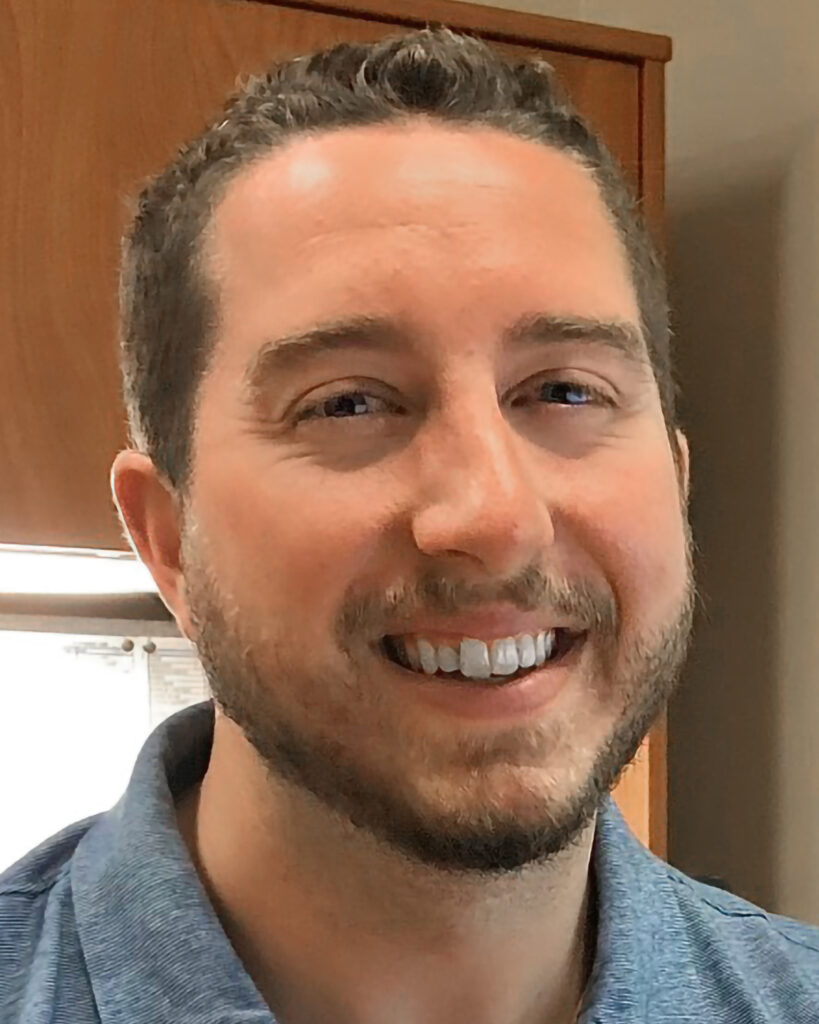
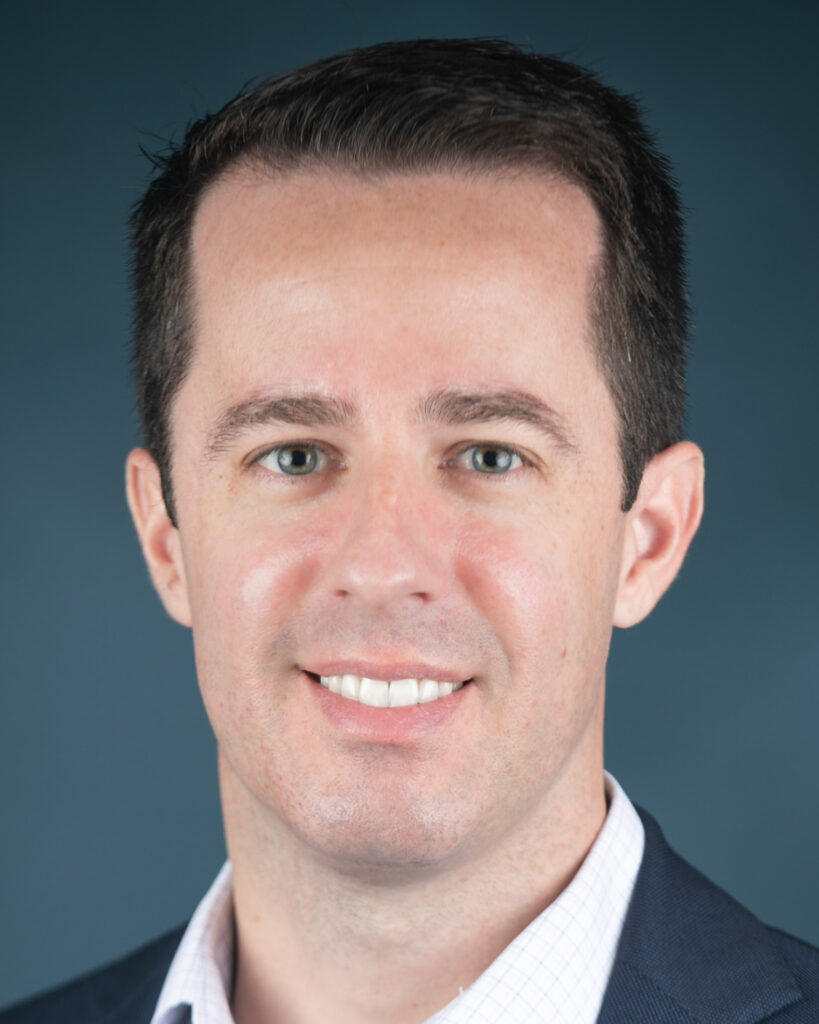
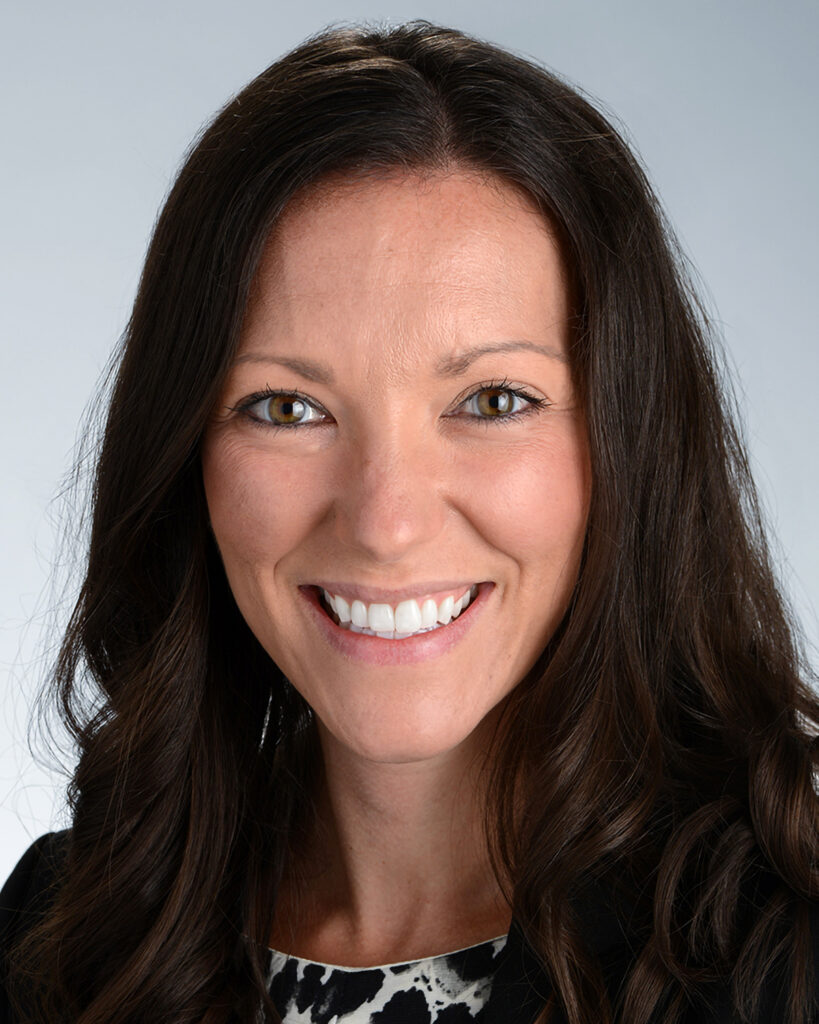
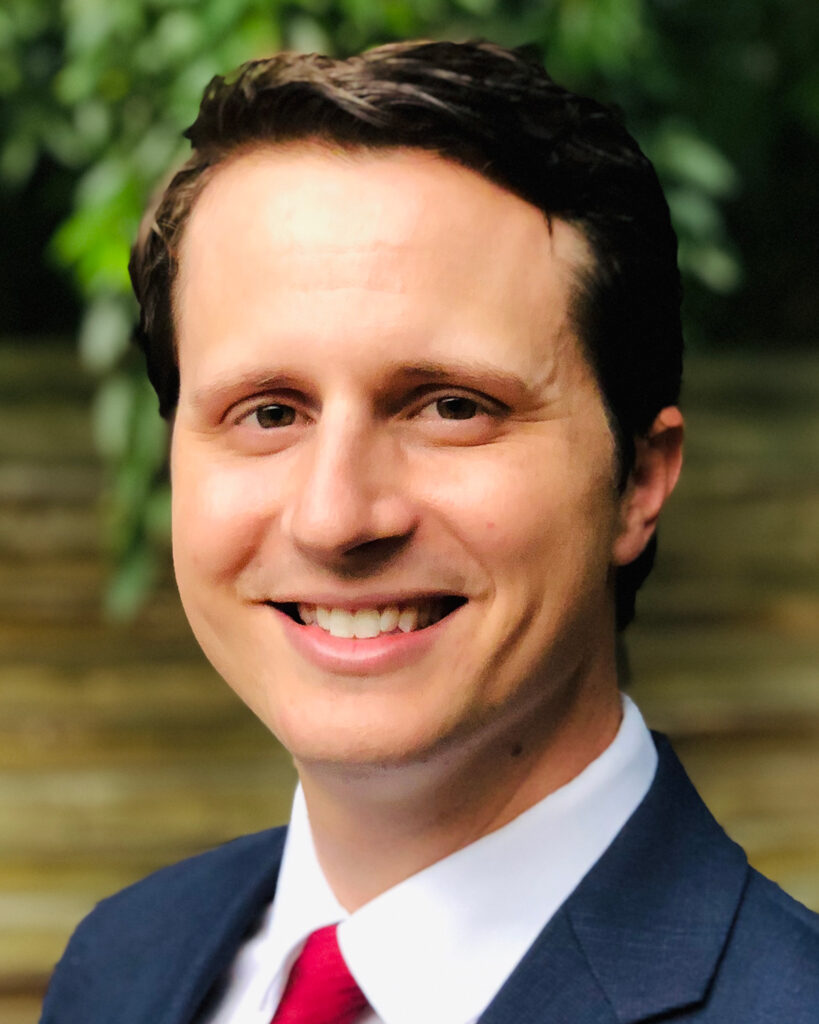
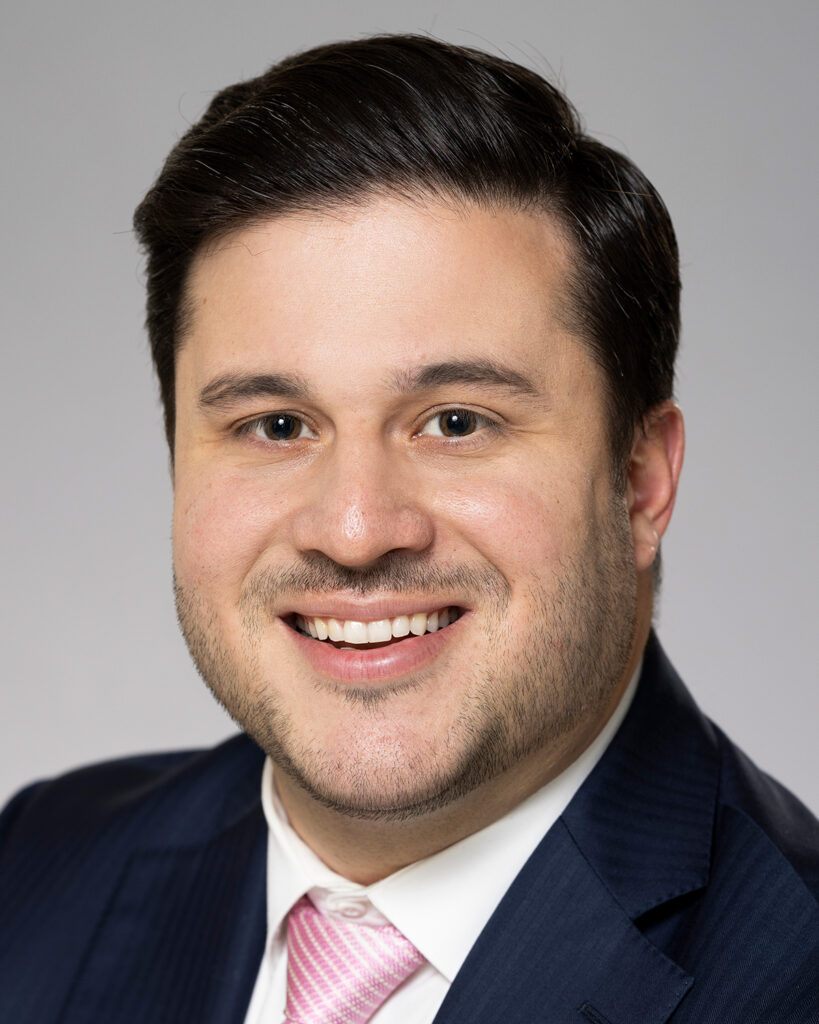

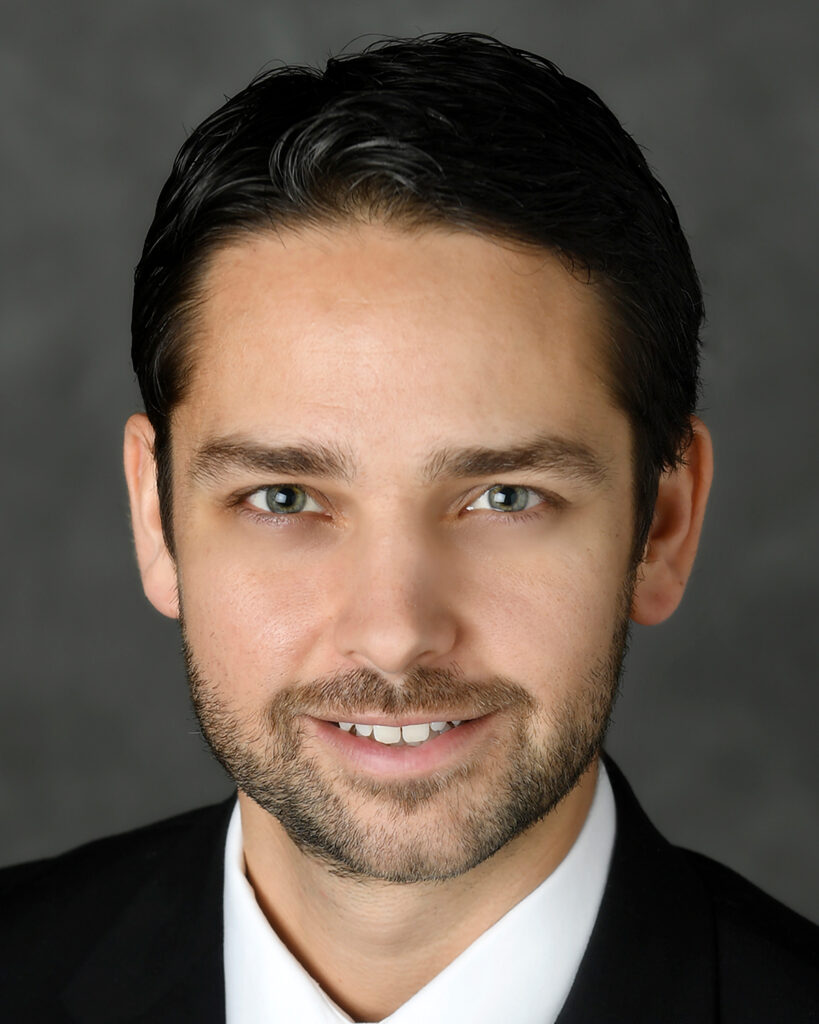
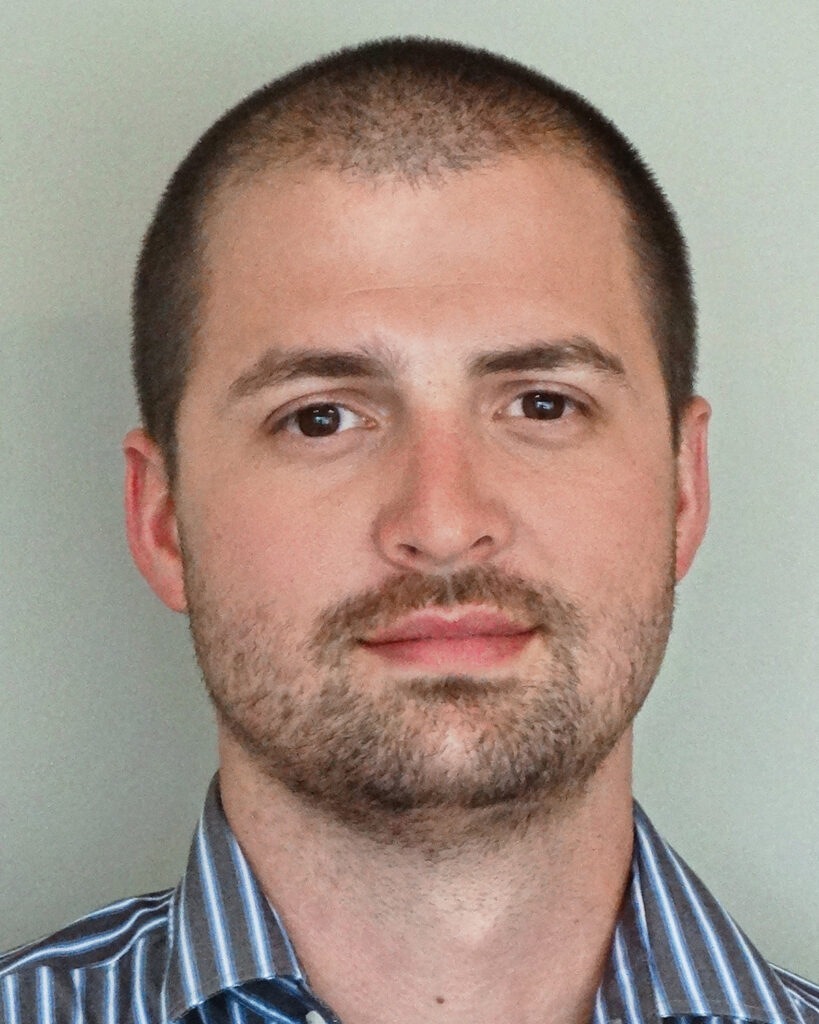
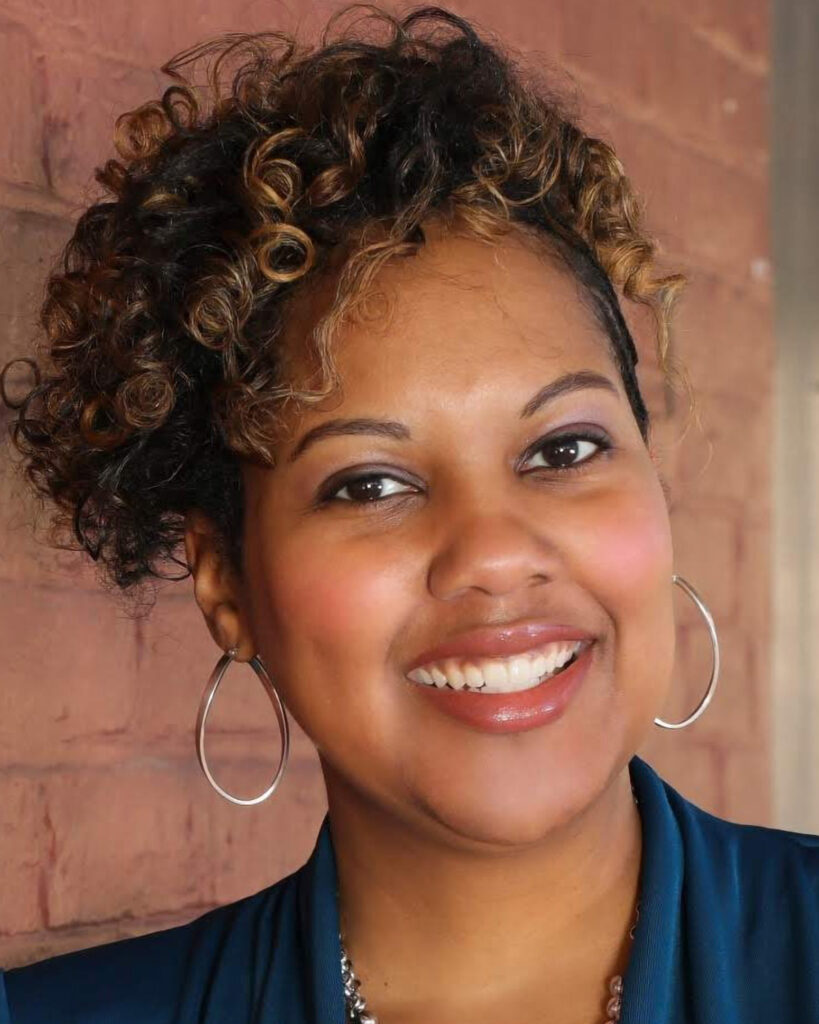
Quincey Adams: Serving His Hometown

Quincey Adams wanted to move back to his hometown of Morehead City, N.C., on the state’s coast, after graduating from East Carolina University with a business administration degree. He’s been with Carteret Health Care for more than five years.
“I love the community in my hometown, and I decided that working for a place like Carteret Health Care would be a terrific opportunity for me to give back to the community,” said Adams, a materials management, pricing and contracting analyst for the nonprofit hospital. “There are so many details that go on behind the scenes in supply chain that the majority of people do not even know or can begin to comprehend.”
Adams wasn’t seeking a position in supply chain and never thought about what it all entailed but has learned the importance of it in healthcare and as a whole. “My director, Bobby Hill, started in supply chain early in his career and has been a huge help and great mentor throughout the past five years of my life,” he said. “Carteret Health Care has great leadership. I’ve been pushed to grow not only as a leader within my department but as a human being as well.”
Carteret Health Care made sure its hospital was stocked with PPE and other supplies since the start of the pandemic. “We’re a small, stand-alone hospital in a rather small community and we’ve been able to stay at a comfortable level of inventory on hand,” Adams said. “Departments, team leaders and administration have collaborated incredibly well with each other to ensure supply conservation measures and proper communication have been in place.”
The 135-bed Carteret Hospital hasn’t had to deal with some of the issues other healthcare facilities around the world have been dealt. But that isn’t to say supply chain roles haven’t changed at Carteret Health Care during the pandemic.
“Most all roles in supply chain have changed,” Adams said. “Communication skills have become a more critical factor – from manufacturers to distributors to customers. It’s key when fighting supply chain shortages and backorder issues.” Adams also says urgency and knowing when to act fast as supply challenges occur is a crucial skill.
The community hospital is dedicating an area for storing future PPE and other supplies like that. “Most hospitals throughout the U.S. will, at some degree, be taking the same steps in ensuring they have a certain number of days on hand of PPE at any given time,” Adams said.
This will increase inventory footprint, but some distributors are also implementing programs for their customers to utilize their warehouses and dedicated areas specifically for PPE. “That’s still in its infancy but its definitely something we’ll invest our time and resources in too,” Adams added.
The population of Morehead City and the surrounding Carteret County continues to grow, home to slightly less than 70,000 people. “That allows us to grow with it,” Adams said. “We’re renovating our O.R., enhancing the workflow and increasing the amount of O.R. rooms we have, and there are many projects to come in the future.”
Carteret Health Care has been serving the residents of Carteret County and Eastern North Carolina since 1967. It’s a member of the Mayo Clinic Care Network.
Kenny Allshouse: Enterprise Initiatives

Kenny Allshouse began his healthcare career at a family-owned durable medical equipment company while he was still in college. “Providing medical equipment directly to patients in their homes was both eye opening and rewarding as it immediately improved the quality of life for people in the community,” said Allshouse, now the senior director for HCA Contracting with HealthTrust Supply Chain in Dallas.
“I had no prior knowledge of, nor interaction with, the healthcare industry before that. But the longer I worked there, the more I understood the importance of the work we were doing.”
After college, Allshouse began working for HCA Healthcare in a role supporting supply chain, and has been in the contracting space for almost 14 years. “The diversity and breadth of initiatives we’re involved with (in supply chain) motivates me the most. Supply chain impacts expense management, inventory and logistics, clinical value analysis, environmental services, food and nutrition, emergency response and many other areas affecting patient care,” he said.
Allshouse serves and supports HCA Healthcare divisions in Texas, but the pandemic required a company-wide response. “That provided me with opportunities to assist at the national level, leveraging HCA’s scale and resources to address needs across the organization,” he said. Allshouse now works on enterprise-wide initiatives as a permanent part of his job as the pandemic highlighted the importance of adaptability for him – the ability to learn quickly, apply skills in new ways and respond to changes. “Those are competitive advantages for businesses and individuals,” he said.
“We were solving problems outside of our traditional job scope,” Allshouse added. “The team’s willingness to adapt to any challenge with a whatever-it-takes attitude was remarkable and a source of extreme pride.”
As HealthTrust and HCA move forward, both clinical and non-clinical purchased services has become a central and consistent theme of its contracting efforts. Significant time, energy and resources have been invested in their purchased services efforts.
“Measuring the quality and value of a service is different versus measuring the clinical outcome of a surgical device,” Allshouse said. “Because each service is unique, it can be complex understanding the nuances and critical issues for end users, and how to deliver the service in a high-quality, cost-effective manner.” But the organization has seen realized value in these areas.
HealthTrust and HCA are also innovative in cultivating their formal leadership development programs. Recently, they held their Leadership Institute Academy which has participants learn and develop various skills during a nine-month period with direct input from HealthTrust executives. Participants work in teams to solve actual business challenges and present their recommendations to leadership.
He also highlighted a few leaders who have been willing to invest time and help advance his career. “In the contracting space, Fred Keller and Ryan Compton have been outstanding mentors who are always available to provide guidance or remove obstacles,” he said. “It’s clear that they also take a personal interest in our team, which fosters a lot of mutual trust and respect. Matt Pehrson, Supply Chain CEO in Dallas, has also been a positive influence.”
“My experience at HealthTrust and HCA has been that when you express an interest to learn and to be mentored, there is no shortage of people willing to contribute to your success,” Allshouse concluded.
Angie Bruns: Making an Impact on Multiple Levels

Angie Bruns joined the healthcare industry to help people. Growing up, her aunt would always share how important her work in pathology was to the community and how it impacted her. From those conversations with her aunt, Bruns was inspired to devote her professional career to the healthcare industry. Her goal was to align her career as a professional in an industry where her contributions would impact multiple levels: external, internal, and downstream in the organization.
Because healthcare has been a part of her family, stepping into the industry was an easy decision. It fits her personality as well. “I am an extrovert,” she said. “I have always enjoyed getting to know individuals and helping people. Healthcare allows me to leverage both of those traits.” Whether she is supporting a team member with mentoring, helping a clinician receive a product they need to take care of a patient or strategizing for the organization, Bruns rises to each challenge. She believes that the role of healthcare in the world is essential to everyone.
“Healthcare is a global industry,” she said. “Everyone, at some point in their life, will have sought after and needed assistance from a healthcare worker. It is a conversation with which everyone can contribute and participate.”
Starting out at TUKHS
Bruns started her career in a month-long internship at The University of Kansas Health System (TUKHS). “One of my professors was a director in Perioperative Services at the time, which gave me a peek into the supply chain realm. I was already impressed by the culture of the organization but the moment I stepped into an operating room, I was sold,” she said.
Not only did she get a better picture of what the supply chain entailed, she was also able to see the impact when a supply chain operational function failed and how that can affect patients. “It’s one thing to not have toilet paper for a day, but to not have a lifesaving piece of technology hit home for me,” she said. After her internship, Bruns went from a Business Operations Analyst to the Senior Director Supply Management and Administration, her current role.
Throughout her career, Bruns has maintained the perspective that she’s in this industry to help people. Even if she’s not one of the frontline workers, she understands that the role of the healthcare supply chain plays a critical part in saving lives. “Working in healthcare supply chain, I get the honor of helping someone, of contributing to saving a life, and giving back to my community.”
Navigating a pandemic
During the early days of the pandemic, she stepped into a role as the System Director of Clinical Supply Optimization, where she essentially had to build an entirely new team. Despite the fact that they were building a new program at TUKHS, Bruns said she is most proud of her team’s humility and teamwork.
“No one knew how to work from home. No one knew how to build a team remotely and orientate them remotely. No one knew how to build an entire program from the ground up remotely. They had to learn how to work together and trust one another without having any in-person meetings.” Her team didn’t even meet face-to-face until May 2021.
Even with these challenges, Bruns and her team have persevered and met the challenges head on. “In supply chain, understanding the end-to-end process is an art, but it is not the type everyone gets the pleasure of having up on their wall. This pandemic has enabled supply chain team members (and even those outside of supply chain) to not only understand the end-to-end supply chain process but work through each facet of it.”
Her team has even had the opportunity to educate end-users and suppliers on the scope of the supply chain from end-to-end. “Each of our customers knows a little more about supply chain, which has allowed us to develop bridges, build them, and walk over them together.”
Developing leaders
TUKHS employs lean principles as the formal leadership model. Leaders go through lean training once they are placed into a position of leadership. In her department, they are working on a leadership development plan for the manager leaders. It’s a year-long program for all supply chain managers with direct reports. “Each supply chain manager will undergo formal career development after they are hired into a leadership role, manager level and above.”
The program will focus on learning and applying key leadership traits in addition to participating in industry and career experiences on topics like emotional intelligence, mentorship, effective communication, and innovative thinking. “After completion of the program, each manager will be responsible for trickling down this knowledge and experience with their front-line team members.”
Bruns understands the power of effective leadership, the capability to guide an organization, department, and workforce to better outcomes for the patients. “If I were to summarize my mentorship experiences throughout my lifetime, I would say they have taught me the importance of our own soft skills and how to appreciate the diversity each person carries in their own soft skills. Healthcare is one of the most diverse industries out there. No other industry can contribute more to people’s health and well-being than healthcare.”
Hunter Chandler: Helping to Deliver ‘Incredible’ Health Outcomes

As Atrium Health consolidated its supply chain activities into one ERP with Oracle Cloud, Hunter Chandler said he was like a kid on the playground with the new data in a single system. The assistant vice president of master data integrity and procurement for Atrium Health’s CORE Connect – the health system’s new supply chain solution – has already started developing some dynamic Power BI dashboards integrating purchasing activities across Atrium Health’s multi-state markets.
“That allows us to build a more cohesive buying group without any wholesale structural changes,” Chandler said. “And we are currently developing our processes to nimbly extract and model the data for strategic reporting initiatives.”
Chandler added that the health system’s partnership with its GPO – Premier – allows it to automate the management of its purchasing catalogs within Oracle Cloud. “We initially struggled to keep our pricing and product catalog up-to-date due to new complexities and scale as Atrium grew,” he said. “But once we understood the processes in Oracle Cloud, we went to the technology arm of our GPO with the idea that they could curate the pricing data in a way we could ingest it.”
That cut hundreds of hours of processing time updating data in Atrium Health’s system. “I think it’s a tremendous success story in a relatively early implementation of Oracle Cloud,” Chandler recounted.
Chandler has helped the IT department with the selection of a true master data management software solution, while serving on the health system’s data governance council that is actively implementing a true ‘data as an asset’ culture, according to him. “I can’t wait to start managing our master data around items, suppliers, locations and others in a more disciplined and scalable way,” he said.
Growing into a leader
Chandler’s growth has flourished under Conrad Emmerich, senior vice president at Atrium Health, who hired him as an analyst at Atrium Health Wake Forest Baptist in Winston-Salem, N.C. “Conrad always listened and steered me toward our value analysis program, which really led to my first leadership role in healthcare,” Chandler said. “He leads by example, and I have picked up many leadership traits from him. I was also fortunate to be surrounded by young leaders at Wake Forest Baptist who went through the administrative fellow program.” Chandler’s wife, Charlotte, was the reason they moved to Winston-Salem due to her selection to that program. “I fell into the group of Fellows through proximity to my wife, but we formed positive working relationships and ultimately friendships both inside and outside of work.”
Many in the fellowship program rose through the ranks in various departments in the hospital system. “We learned from each other and slowly grew as leaders in the process,” he said. “I attribute much of my success to growing with that group during my first few years leading people at Wake Forest Baptist.”
Day-to-day survival during the pandemic
That leadership was put to the test during the pandemic as health system issues became day-to-day survival early on, rather than playing to the big picture. “It was quite a shock as it forced me to grow into much more of a logistician and operator, and less of a process-designer and number-cruncher,” Chandler said. “Vision and big-picture thinking quickly became a secondary skill. I appreciate that time because it forced me to grow a side of myself that maybe doesn’t come out naturally.”
Chandler’s role in early 2020 was two-fold: managing both the team that supports Atrium Health’s PeopleSoft platform and its value analysis team. “That combination yielded tremendous value because we could quickly make product decisions or process pivots, then operationalize them as I had the talented PeopleSoft team ready to act,” he said. “Moving forward, I quickly realized that some of our inconsistent data in PeopleSoft made managing our way through a pandemic incredibly challenging.”
That realization has guided Chandler in his new role developing master data for Atrium Health in a new ERP. Healthcare has always seemed like a challenging blend of skills acquired in school with a ‘roll up your sleeves and get it done’ mentality to Chandler. “I love the nature of the industry and I’m so happy I chose this field,” he said. “The end result of healthcare, when done right, is one of the most rewarding endeavors one can feel a part of – whether it’s a life-saving surgery, the birth of a child or mental health healing and peace. Knowing that I support the people who deliver incredible health outcomes is special.”
When job descriptions and titles ceased to matter as the pandemic swept across the globe, Chandler said “healthcare operates at its best when we forget about departments and titles, and organize our activities around patients.” COVID-19 forced that upon the healthcare industry instantly and the cycle time from idea to action compressed exponentially. “Some of the corporate red tape disappeared and it showed me the power of a meaningful, common goal for a talented workforce.”
Atrium Health, based in Charlotte, N.C., is an integrated, nonprofit health system with more than 70,000 employees serving patients at 40 hospitals and more than 1,400 care locations. It provides care under the Atrium Health Wake Forest Baptist name in the Winston-Salem, N.C., region as well as Atrium Health Navicent and Atrium Health Floyd in Georgia and Alabama. It is ranked nationally among U.S. News & World Report’s Best Hospitals in eight pediatric specialties and for rehabilitation.
René A. Gurdián: Embracing a Forward-Thinking Mentality

As a local New Orleanian, René Gurdián jumped at the chance to join Louisiana-based Ochsner Health in 2017 when the opportunity presented itself. “I think that healthcare is a big call to action,” he said. “Our purpose every day is waking up and ensuring that patients receive care. It’s that simple.”
While the mission is simple, Gurdián’s job lately has been anything but, especially during the pandemic. As director of strategic sourcing for Ochsner, Gurdián oversees the organization’s contracting team – managing vendor relationships while mining for standardization opportunities – and assists with sourcing alternative products. That second portion, sourcing alternative products, has become top-of-mind for the nation’s supply chain leaders. “Obviously, with the global supply chain constraints, we leverage various tools to find functional equivalents that are clinically-approved products that our Logistic team stores within their centralized depot to ensure that our operations are not obstructed,” he said.
Indeed, sourcing has changed dramatically during the course of the pandemic. “I think the biggest disruptor around sourcing is how organizations embed resiliency planning in their strategic pillars and daily operations; in other words, what type of tools we’re leveraging to help us make proactive decisions instead of reactive decisions related to product disruptions,” Gurdián said. “So, for reactive decisions, where we get a notice that product is going to be on back order for three to six months, we leverage tools like ECRI, leveraging their competitive products cross tools that helps us determine what type of comparable products we have out there.”
Along with cutting-edge tools, Ochsner leverages a more old-fashioned key to success – relationships, specifically with its clinical team. “Most organizations now have adopted a clinical supply chain team, where we have nursing leadership and physicians that help us drive engagement and standardization discussions with our clinical team members across the entire enterprise,” Gurdián said. “They help us really understand, is this a comparable product? If it’s not, are there any ways that we can introduce the product and implement this product even with potential changes in clinical practices?”
In one recent example, a vendor of sterile water vials went on rolling back order because the vendor could not meet the demand. To meet the need, the Ochsner team purchased a significant stock of sterile water on its own, and via guidance from its clinicians, changed clinical practice, with an assist from the pharmacy team in using the vials. “I think this is an example of a health system being proactive, as well as nimble and flexible, and our clinicians aligning with us to figure out how we make sure that, while it’s a disruption to our operations, it’s minimal disruption to our clinicians and to our patients.”
Ochsner uses a forum by the name ‘Supply Stewardship’ dedicated to many of its larger service lines – Cardiology, Orthopedics, Neurosciences, Pain Management, ENT, etc. “Our physicians understand what disruptions are ongoing, and they continue to partner with our supply chain leaders on the business side of healthcare and the overall healthcare ecosystem,” Gurdián said. “And so here at Ochsner we have a really engaged group, as well as commitment from our executive leadership team that oversees the management of our 30-plus hospitals.”
That engagement was tested and refined amid the early days of the pandemic. Within a two-month span in 2020, Ochsner lost around $100 million due to shutdowns and COVID protocols. Ochsner leadership helped the Supply Chain team create a narrative around a call to action for the last six months of 2020. The organization looked at major standardizations across all service lines, whether it was Cardiology with drug-eluting stents, or ENT and nasal implants with a specific vendor.
“A lot of re-standardizations occurred, which was hard,” Gurdián said. “The way we educated ourselves as business operation leaders was understanding the challenges of product changes from a physician’s perspective. All physicians undergo various simulation labs through fellowship programs where they were potentially being trained on specific platforms with specific products tied to specific vendor organizations.. There was a lot of change management that needed to occur, and we had to be conscious of that because our physicians were going to be performing procedures on our patients that we see as someone’s mother, father, loved one, etc. It’s a bigger, more open dialogue and a lot more engagement around where can we standardize, where can we reduce the number of vendors within a certain service line so that we can get a quality product at competitive price while providing the quality care our patients expect and deserve.”
A new way of working in supply chain
Is it possible for supply chain leaders to find their bearings in an era of so much disruption? Yes, Gurdián said, but three things need to happen. “The first key is education of supply chain resiliency or supply chain continuity plans with vendor partners while emphasizing transparent communication around impacted product categories,” he said. “Second, education and understanding around raw material constraints that impact finished goods. And third, the use of technology or tools that help us be better at what I would call demand planning, or at least educating ourselves around demand planning for the use of products, how raw materials impact, as well as the utilization of products.”
Healthcare has to better tackle what scholars call the “bullwhip effect.” When you whip a bullwhip, the variation at the tip versus when it comes all the way back to the person that’s actually whipping it grows larger and larger. “It’s a perfect example of how healthcare systems are six to seven degrees separated from manufacturers that produce raw materials that are critical to various medical products such as nitrile butadiene rubber (NBR), Teflon, plastics or resin,” Gurdián said. “Without having that understanding of manufactured raw materials and how it impacts our finished goods, we can’t be prepared for changes proactively or predicatively because we’re not aware – we’re not as close to that manufacturer.”
Gurdián predicts there will be a lot of education around supply chain resiliency and continuity, and working more closely with vendor partners. “We have to be at the hip with these vendors, pushing them to share their supply chain resiliency plans and confirm they have a plan in place if one of their plants in Central America is impacted and goes down for an unplanned shutdown. Or if one of their plants in Austria goes down, what other redundant manufacturing plants do they have to minimize disruption?”
But in order for those changes to take place, supply chain leaders have to shake off old ways of operating and embrace a forward-thinking mentality. Gurdián said Ochsner CEO Warner Thomas talks about it in three phases – reactive, proactive and predictive. “I think our supply chain is right in that proactive realm, while maybe five to seven years ago we were more in the reactive realm.”
Gurdián credits Ochsner’s Chief Supply Chain Officer Régine Honoré Villain with phrasing it best: “We’re the facilitators of solutions.” Supply chain executives across the U.S., across the world, need to get comfortable with the idea that people are going to come to their division to find solutions. “I think that creates a sense of excitement,” Gurdián said. “It also creates apprehension because there are only so many hours in the day. But I think for supply chain leaders, it’s a call to action. It’s how we align ourselves with the mission and values of our organizations. It’s understanding that while I don’t put a needle into a patient’s arm, I’m impacting that patient’s care when they’re in our health systems, because we’re making decisions across the ecosystem of healthcare when it comes to the use of product. When it comes to the appropriate services that are required, we must align with the mission that our patients come first – no matter the name on the hospital door. For me, that’s where the excitement comes from.”
Gurdián said he loves the solutions nurses brought forward during COVID. Throughout the pandemic, they’ve found solutions to challenges. For instance, Ochsner used long extension tubing to provide fluids outside the COVID-positive patient rooms to reduce the number of interactions with COVID patients. But that created a jumble of tubes across floors creating potential hazards. So based off the nurses’ suggestion, Ochsner bought pool noodles, cut them in half, and put them on top of the tubes so that they were easy to see. “it was a practical, creative solution that kept quality and safety top-of-mind for our team.”
Those challenges are what should excite supply chain leaders. “You’re going to have to create a new normal, you’re going to have to be flexible and nimble, and you’re going to potentially create the journey or the narrative that your health system is on,” Gurdián said. “It’s a daunting task, don’t get me wrong, but it’s an exciting one as well. Building the plane while it’s in flight is nothing new for our supply chain, we just need to make sure we always have the parts to build the plane – that’s where proactive planning comes into play.”
Lucas Han: Up for the Challenge

Lucas Han has been with Gaithersburg, Md.-based Adventist HealthCare for a total of five years. After receiving his master’s degree in supply chain management from the University of Maryland and beginning as an analyst with Adventist HealthCare, he was promoted to a supply chain manager for strategic sourcing role in January 2020.
“This was my first job out of school,” Han said. “After three years of being an analyst, I really liked the job, and an opportunity came for promotion when my manager moved up to director.”
Han says he’s learned a lot of leadership skills from his supervisors at Adventist HealthCare and the Capstone Leadership Institute where he was part of the class of 2021. Capstone held its second year of courses in 2021 dedicated to equipping and empowering the next generation of healthcare supply chain management. Courses cover topics like the importance of physician and provider relationships, contract management, value analysis, forecasting, GPOs and inventory management.
Han’s promotion to supply chain manager at the beginning of 2020 came right before the pandemic struck the U.S. “It’s a very different role from being an analyst. But I’ve slowly realized my role as a leader and mentor,” he said. The challenges of the pandemic concentrated Han’s role.
“At the beginning of it, we focused on getting as much PPE supplies as we could,” he said. “We also focused on donations because we had a lot of donations come in. But I focused on sourcing and how to get PPE products like gloves and gowns.”
In 2021, Adventist HealthCare’s supply chain team shifted to its aim to savings. “By the end of 2020, we were pretty competent in our PPE supplies, so we had discussions around savings,” Han said. “We also had analysis conversations and developed new strategies.”
The nonprofit Maryland health system partnered with Premier Inc. and its supply chain solutions program. “The goal for 2021 became compliance with the program and finding as many savings as possible, and we did pretty well,” Han said. “We reached our goal by the third quarter of 2021 and by the end of the year, we were able to (realize) $4.5 million in savings for the organization. I’m really proud of my team for that.”
Han says the goal this year is finding savings in purchased services through Premier’s relationship with Conductiv, a purchased services GPO attentive to tailored sourcing. “We hope to find savings in that area. We want to keep up the momentum,” he said.
Adventist HealthCare includes three acute care hospitals – Shady Grove Medical Center, White Oak Medical Center and Fort Washington Medical Center – as well as two physical rehabilitation hospitals, outpatient centers, imaging centers, urgent care facilities, home care services, employer health programs and physician networks. It’s the largest provider of charity care and community benefit in Montgomery County, Md., and is nationally recognized for its cardiac, OB, cancer, stroke, orthopedic, rehabilitation and mental health services.
Jonathan Looke: Purpose-Driven

When Jonathan Looke graduated from the University of Florida with a degree in industrial engineering, he never expected to end up working in the healthcare field. He started his career in manufacturing at Lockheed Martin before his father – an anesthesiologist – familiarized him with the different aspects of healthcare from the perspective of a hospital-based physician.
Eventually, Looke traded the factory floor for a hospital and never looked back. “Every day I feel purpose-driven and every evening I feel accomplished and confident that the work we do has positively impacted our patients, our neighbors, community, family, and friends,” he said.
As the regional director for supply chain operations at AdventHealth’s Orlando campus, Looke can lean on his background of faith to derive meaning from his career. “Not just working in healthcare but working with AdventHealth connects perfectly to my personal emphasis on servant leadership. I’m blessed to work where our guiding principles as a faith-based organization align perfectly to our mission of extending the healing ministry of Christ.”
Solving multi-dimensional puzzles
As for working in supply chain, Looke was initially hesitant to jump in. “The field of supply chain is often misunderstood and has a connotation of being somewhat dry or boring – ‘package pushers,’” he explained.
He quickly realized that working in supply chain had a lot to offer in relation to his interests: problem solving, strategizing, and making processes as efficient as possible. “Supply chain is a multi-dimensional puzzle with so many complexities that is rife with opportunity to make a positive impact. The work is very challenging but also very rewarding.”
Additionally, he found that the pandemic further changed people’s perception of how the supply chain operates. For many, the pandemic illuminated the structural limitations of the supply chain, specifically for healthcare, showing how important efficiency and strategy is to keep things moving.
He said, “It has helped bring awareness and prestige to the healthcare industry, and maybe some enlightenment around your frustration when your Prime delivery is delayed. “
Navigating a pandemic
It’s no secret that healthcare took a significantly hard hit from the beginning of the COVID-19 pandemic. Ranging from staffing shortages to supply shortages, healthcare companies had to work harder to navigate the pandemic than most other industries.
Looke said, “The pandemic created chaos in the supply chain, which ranged from minor shipping delays to major backorders with no estimated time of arrival. It was critical for my team to stay agile, communicate quickly with the clinical teams and create stop-gap solutions on the fly until orders started filling.”
That agility allowed Looke and his team to address the challenges that AdventHealth’s employees and patients were facing every day. “One project I’m particularly proud of is our initiative during the pandemic to start reprocessing items such as N95 masks using a hydrogen peroxide disinfection technique,” he said. “We did whatever it took to keep the front-line stocked with the supplies they needed to care for our patients.”
When it comes to his team, Looke says he is most proud of their resilience throughout the pandemic. Despite the long days, extra weekend shifts, and after-hours rounding, everyone on his team stepped up to the challenge without a complaint. Looke and his team believed in their critical mission to provide better care for their community.
Looking to the future
Moving forward, Looke is continuing his leadership development through AdventHealth. AdventHealth has a number of leadership development programs that are designed to challenge and empower leaders to keep growing and learning. “I have learned so much from my mentors and through the leadership development programs I’ve been a part of over the years.”
He has gained a greater appreciation for how the power of relationships and networking contribute to a leader’s growth and success. Looked explained, “Technical know-how and hard work are also very important, but it is also the people you know and the subject matter experts that you can quickly bring to the table that help to rapidly solve problems and make improvements.”
In addition to investing in his leadership development, Looke is excited to implement new initiatives to encourage efficiency and consistency. He is most interested in areas where technology and innovation can be applied to make work easier, and the services offered by his team more consistent.
Among these projects, Looke is anticipating implementing an RFID system throughout the campus to track equipment and supplies and utilizing real-time data to proactively identify and resolve potential issues before they become a thorn in the side of the clinical teams.
He said, “We are really in the customer service industry and our goal is to always give our clinicians and patients what they need, when they need it.”
Chase McAfee: A Go-To for Clinicians

Chase McAfee was part of Intermountain Healthcare’s emergency planning committee before the COVID-19 pandemic ever swept across the world.
“It was very much a tabletop practice and ‘What do we think this could look like?’,” said McAfee, continuous improvement manager for Salt Lake City-based Intermountain Healthcare. “It’s been positive to see the plans we put in place actually pay off. It bought us valuable time heading into the pandemic and put us ahead of other health systems and businesses because we had some foundations already in place.”
The emergency planning teams and their predecessors focused on what supply chain strategies would be needed to align with how Intermountain’s system would respond to a pandemic, natural disaster or mass casualty event. “A lot of that has paid dividends over the past couple of years and taken more of an active presence in my day-to-day role,” said McAfee, who sees his role as an operations integration manager and has worn two hats during his time on the emergency planning committee.
Intermountain had a solid understanding of its PPE and disinfectants in place regardless of the pathogen or illness and what could see an increase in a pandemic. There were strategic reserves to manage the initial wave, including solid formulary and standard items.
“We had that foundation – knowing what procedure mask and different respirators we’d go to, for example – as well as relationships with associated suppliers, which were ever more so important to have direct lines,” McAfee said. “We knew who to work with to start ramping up quickly.”
But the global supply chain dried up fast and that was a learning experience in real time. “It’s very dynamic, especially with anything originating from the Asian markets like a lot of raw materials and goods,” he said. “We faced barriers with imports/exports due to geopolitical and logistical issues that we didn’t expect, and traditional product lines like gloves and gowns were impacted. These were key learnings.”
Safety never waned as the first priority for Intermountain’s supply chain teams throughout the pandemic. “I’ve taken pride in our team and our organization for that. We still made tough decisions that were cost conscious, but we made sure our caregivers, clinical staff and patients had the supplies needed for safety,” McAfee said. “We’re fortunate that our folks never had to sacrifice their personal safety taking care of patients because they didn’t have PPE like gowns. We didn’t have to get close to those decisions, thankfully. Our proactive work and preparedness steered us away from going down that path.”
For McAfee, safety is never too far from the forefront of his mind. He began his career thinking about becoming a paramedic and going through the fire academy. “Ultimately, I thought I was going down the CRNA (certified registered nurse anesthetist) route,” he said. But he started with the supply chain side at a children’s hospital while he was attending school and saw an opportunity to have a positive impact on healthcare and patients that way.
“Having a basic involvement in the EMS world has given me the understanding of what products are and their basic uses. That has really helped me – being able to have those conversations and have the confidence that I know what I’m talking about, whether it’s respirators or other products,” he said.
“Chase is a superstar,” said Brent Wigington, director of operations and integration for Intermountain Healthcare and McAfee’s supervisor. “He knows his clinical product really well.”
Intermountain also provides a large variety of resources, from in-person classes to virtual ones on leadership and skills training, which help supply chain leaders learn more about the clinical side. “There’s plenty of opportunities here to learn more about the clinical side and help with your career and leadership growth,” McAfee said. “Also, Intermountain certainly has many great leaders to learn from and help get you where you need to be. I’ve been fortunate to have a lot of coaching – from both a career and clinical perspective.”
Not only does the supply chain side understand the clinical side at Intermountain, but the clinical side is also seeing the value of supply chain. Before the pandemic, it was expected that the supply chain would have a product on the shelf when a clinician needed it. But now, more clinicians are working with the supply chain as they see the tremendous value in the services that McAfee and the supply chain team offers.
McAfee’s team is the intermediary between Intermountain’s supply chain side and its clinical operations side. “We’re the filter that translates supply chain speak into clinical adaptation.”
“Chase is really a go-to for clinicians to call,” Wigington said.
Kera Thompson Simmons: Making a Difference

Kera Thompson Simmons was three months into her role as manager of supply chain finance at The University of Texas MD Anderson Cancer Center when the pandemic hit. At the time, Simmons and her department were building out a supply chain finance team. She had two analysts on her team, and they were tasked with evolving the inventory management system from Excel spreadsheets to automated dashboards in order to provide leaders with real-time data that would help them make data-based decisions.
“Time was of the essence during the pandemic,” Simmons said.
So was coordination. Supply chain is multidisciplinary and there are lots of different people involved.
“With a pandemic, you’re looking at procuring critical supplies, so you need to contact infection control to get their approval,” Simmons said. “You have clinicians involved to get their approval. And then of course, you have the supply chain responsibilities that you have to take into account, such as the procurement process and how long it takes for supplies to actually be manufactured and delivered to you.”
Despite the challenges, Simmons said she was proud of what her team accomplished. For instance, they automated inventory management and forecasting so leaders had a better idea of what usage would look like based on usage changes throughout the pandemic.
“The changes were constant,” she said. Depending on what the CDC or CMS said, MD Anderson would need to pivot to stay on top of the new guidelines. “We had to be nimble and agile to support our supply chain,” Simmons said. “We created flexibility for our supply chain.”
Gaining a supply chain skill set
Simmons always had her eye on a career in healthcare. At first, she started pre-med because she thought she’d want to be a clinician, but other aspects of healthcare – policy and administration – won her over. “There’s so much opportunity on the policy side that I definitely thought I could make a difference.”
Prior to joining MD Anderson, her first position was as a business manager in the perioperative space at St. Joseph Health Center. She was responsible for ordering inventory for six ORs. From there, she became a business director over three hospitals. Simmons was focused on standardization and helping clinicians build a standard of care. She was also tasked with looking at the cost of care, which at that time was a relatively newer idea, she said. “We wanted to understand how much we truly paid for care. We knew that reimbursement was going to be based on care, so we had to understand what we were providing and that it provided value, not just how much we spent.”
Simmons said those roles helped her gain a supply chain skill set that has served her well in her current position at MD Anderson. Along with the creation of the supply chain finance team amid the pandemic, Simmons also supported a newly created clinical resource management team. When the supply chain needed to make substitutions because of product back orders, physicians or nurses were called upon to give the resource team their input, while Simmons’ analytical team worked up forecasting and inventory information.
“We were able to bring in supplies needed right away, but we were also looking at inventory value and inventory turning. ‘Were we actually using this?’ ‘Will we use it in the future?’ ‘Or do we need to see if it’s something that we could share with other organizations, or unload if it’s not needed?’ Those were questions we had to answer.”
Simmons said she is proud of the multidisciplinary collaboration that her supply chain department created for the organization as a whole. “It involved our finance and analytical teams, our newly developed partners, and our newly developed clinical resource management. Through these teams, we added a valued skill set that is often lacking in supply chain.”
And there is more to come. The supply chain team is looking to bring about more standardization across the organization. The goal is to align the supply chain services across the organization to bring about efficiency and value. “I’m excited about that to really see how we can improve on the services we provide,” Simmons said. “Will this allow us to provide supplies more readily? Will we be able to turn around the request times quicker? Anytime we can make the process easier for clinicians, that’s what I’m about. I want to be in the background just making it easier for them.”
Leadership development
As an organization, MD Anderson promotes leadership development and offers a formal mentoring program. Simmons has a mentor who is one of the nursing leaders. “I am so happy to have her as a sounding board,” Simmons said. “I work closely with clinicians and nurses, so sometimes I just need feedback on the best way to present things. She’s always there to provide feedback.” Simmons also has a sponsor at MD Anderson in Calvin Wright, MD Anderson’s Chief Procurement Officer, who puts her in opportunities and places where she can be of value. “I appreciate that about him.”
Simmons said she has been working with other leaders on developing a talent strategy that incorporates her behavioral competencies within the supply chain.
“Every employee at MD Anderson is evaluated annually based on these competencies,” she said. “It is important to have conversations regarding the competencies throughout the year. By the time you are evaluated, it is something that you have thought about, and continually review as you work. We want to incorporate these competencies into our daily practices, our routine conversations, and help employees understand how these competencies prepare them for growth – whether they want to move to another position, or maybe into another area outside of supply chain.”
